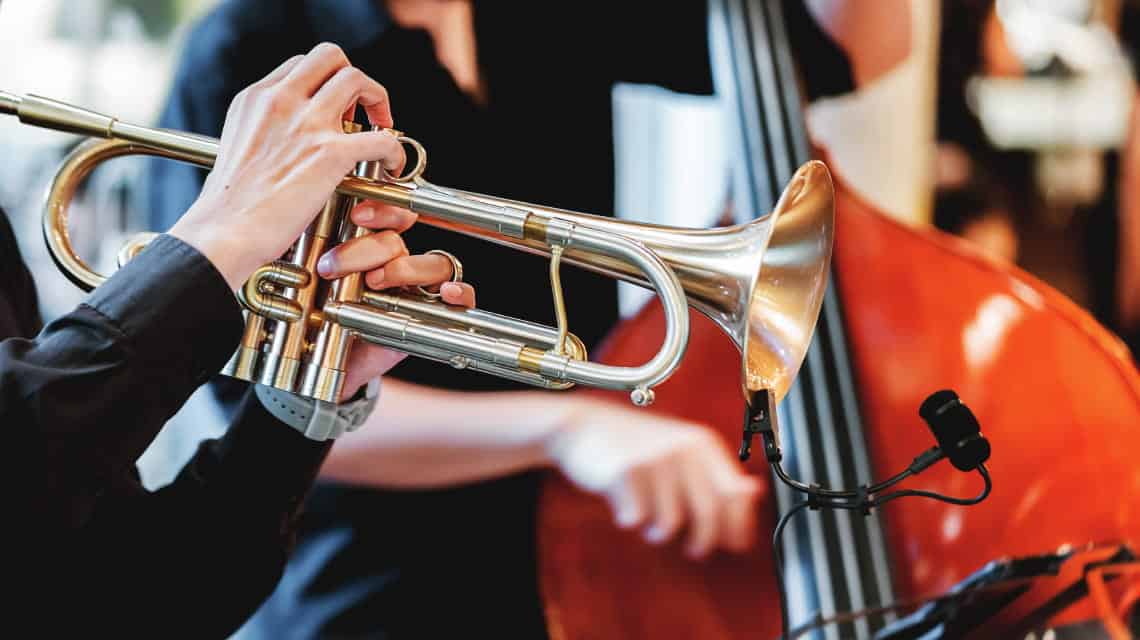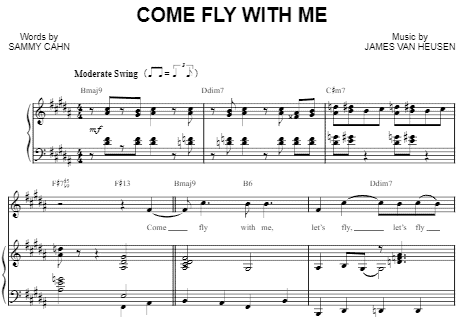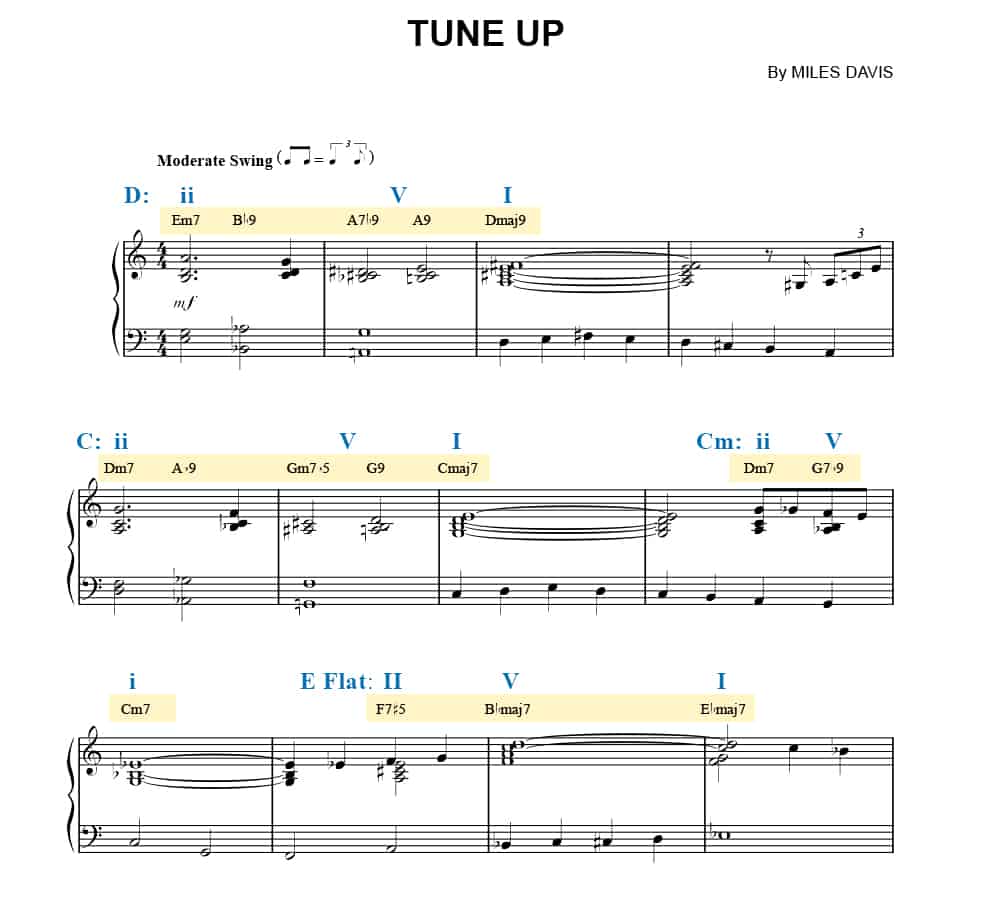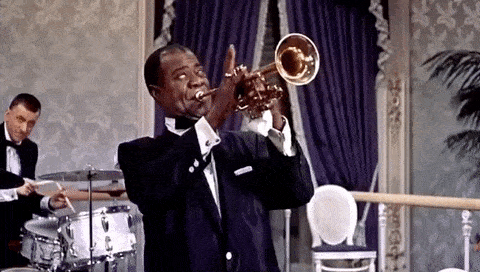An Introduction to Jazz Theory

There comes a time in every musician’s life when they are confronted with the intimidating characteristics of jazz theory. This level of music theory can seem like something exclusively for the musically advanced, so many don’t even attempt to make sense of it all.
However, jazz theory can be easy to understand, easy to use, and incredibly fun to play! Musicnotes is here to help with this introduction to jazz theory, explaining the bare bones and showing you that you are more than capable of becoming a jazz musician!
Swing
There are many different rhythms used in jazz music, and if you’re an aspiring jazz drummer, you’ll likely need to become familiar with all of them! But for our purposes, we’re going to talk about the most common rhythm found in jazz music: swing.
Swing is referred to as both a feel and a rhythmic style, so as a musician it’s important to be able to convey that feeling and rhythm when it’s indicated in music. Most times you will see the tempo actually read “swing.” For example, “Come Fly With Me” by Frank Sinatra looks like this:

So, what is the difference between a straight rhythm and a swung rhythm? Let’s listen to the rhythms back to back:
- You may even see straight rhythms notated with the written direction “swing” above them.
- Conversely, you may see “straight” written above certain passages in swing songs.
Being able to understand and demonstrate the difference between these two rhythms will give you an excellent foundation for jazz theory.
Improvisation
Improvisation is creating or performing something spontaneously, and it’s a massive component in jazz music. Most performances of jazz songs include solo sections, where the band repeats a chord progression and different instrumentalists or vocalists take turns improvising solos over the top of it. As a result, jazz songs are often significantly longer than regular songs.
For example, “So What” by Miles Davis is 10 minutes long, and about 8 minutes are spent trading off improvised solos. Check out the song and pay attention to the roadmap as you listen:
Main Hook > Trumpet Solo > Saxophone Solo > Piano Solo > Trumpet Solo > Main Hook
Tip: Understanding improvisation and actually knowing how to improvise are two entirely different things. To be able to improvise, you will need to have an understanding of jazz scales (and lots and lots of practice)!
Jazz Scales
When it comes to improvising in jazz, scales lay the basic framework. For example, if you’re playing a C-F-G progression, you will only use:
- notes in the C Major Scale to improvise while the C Chord is being played,
- notes in the F Major Scale while the F Chord is being played, and
- notes in the G Major Scale while the G Chord is being played.
However, jazz reaches outside of typical diatonic scales and into scales with more accidentals and possibilities! We’re going to talk about the three following types of scales:
- Pentatonic Scales
- Blues Scales
- Modes
A pentatonic scale is a scale consisting of five notes within one octave. These scales integrate very well into jazz music and are commonly used during improvisation.
- Major Pentatonic Scales use scale degrees: 1, 2, 3, 5, 6
- Minor Pentatonic Scales use scale degrees: 1, 3, 4, 5, 7
A blues scale is a
Pentatonic scale with one more note added in the scale. This note is known as a blue note, and it is the flattened 5th in the case of the Minor Pentatonic Scale, and the flattened 3rd in the case of the Major Pentatonic Scale. As you can probably assume, the blues scale is used in a lot of blues songs, but it can also be incorporated into other improvisational melodies.A mode is a type of musical scale coupled with a set of characteristic melodic behaviors. There are 7 different modes, and in our Guide to Musical Modes | Tips and Tricks to Memorize Each Mode, we go further in depth with each mode and its corresponding characteristics. Once you’ve mastered the pentatonic and blues scales, modes will take your improvisation possibilities to new heights!
Extended Harmony
Jazz music uses a lot of extended chords, such as:
- 7th Chords
- 9th Chords
- 11th Chords
- 13th Chords
7th Chords are structured as major, minor, dominant, half-diminished, or diminished. The easiest way to identify 7th chords is to look at the structure of 3rd within the chord. 7th chords are extremely common in jazz theory and should be understood and memorized before adding even further extended harmony.
C Major

When it comes to 9th, 11th, and 13th chords, all it means is that notes are being added on top of 7th chords.
9th’s, 11th’s, and 13th’s do not receive accidentals unless specified, for example: Cm11♭9
Because 9th, 11th, and 13th chords can get very busy, it’s not necessary to play every single note in the chord. Though there are cases in which these notes may be omitted, in most scenarios, the important notes to keep in the chord are:
- The Root
- The 3rd
- The 7th
- Whichever note is specified in the chord symbol (for example, if it reads C13, then you will need a 13th)
Check out the video below to see an example of these chords in music!
ii-V-I Progressions
ii-V-I progressions are extremely common in jazz. They serve two primary functions, which are often intertwined: to temporarily imply passing tonalities and to lead strongly toward a goal (the “I” chord). ii-V-I progressions are also commonly used as a progression for which instrumentalists and vocalists can solo over. For example, check out this excerpt of “Tune Up” by Miles Davis:

There are a few passing chords here and there, but there are several instances of ii-V-I progressions. Once you start getting familiar with ii-V-I progressions, you’ll start to see them everywhere!
Standards
Jazz standards are songs that are widely known, performed, and recorded by jazz musicians, and recognized by most listeners. For example, you’ve probably heard of “Fly Me To The Moon” by Frank Sinatra and “The Way You Look Tonight” by Fred Astaire. Both of these songs are considered jazz standards.
When getting in touch with jazz theory, the standards are a great place to start, because more than likely you already know them. It will be easier for you to pick up familiar tunes, and before you know it, you’ll have a great understanding of jazz music!
We hope these pointers have helped you realize that jazz theory isn’t as intimidating as it seems. Not only is jazz music fun to play, but it enriches your musicianship and significantly increases your music theory knowledge. Browse Musicnotes’ list of jazz standards today and find a few songs to get you started on your jazz theory journey!



